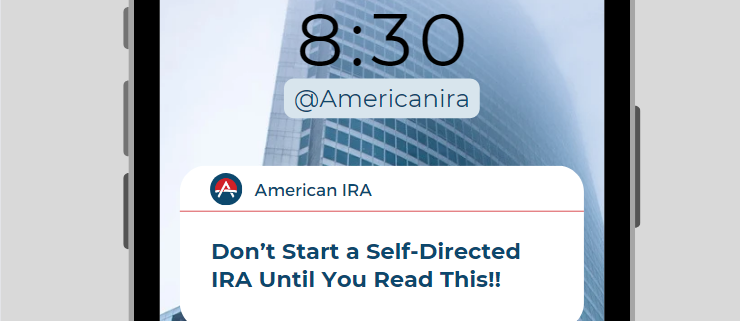Don’t Start a Self-Directed IRA Until You Read This
There’s a lot to consider before starting a Self-Directed IRA. From investment options to fees and regulations, it’s important to do your research before diving in. Otherwise, you could end up losing money or making costly mistakes. In this blog post, we’ll cover everything you need to know before starting a Self-Directed IRA. By the end, you’ll be ready to make informed decisions about your retirement investing.
The Basics of a Self-Directed IRA
A Self-Directed IRA is a terrific way to maximize returns on your retirement investment. It is a type of Individual Retirement Account in which the owner directs how and where their funds are invested, rather than relying on professional financial managers.
With a Self-Directed IRA, you can choose from a wide range of investments such as stocks, bonds, mutual funds, ETFs, REITs, cryptocurrencies, real estate, precious metals, private companies, and more.
Investors should bear in mind that Congress limits certain types of investments and those rules must be followed when choosing selections for the account. Additionally, it is important to be aware of the tax implications of each potential investment choice before making any decisions. As long as investors remain mindful of these points, they can look forward to generating solid returns while having some control over how their funds are allocated.
The Benefits of a Self-Directed IRA
A Self-Directed IRA offers a powerful solution for retirement savings. This account allows you to invest in alternative assets like real estate, private companies, cryptocurrency, and more. A Self-Directed IRA is the only way an investor can access these types of non-traditional investments while still enjoying tax-deferred growth that comes with retirement account investing.
How to Set Up a Self-Directed IRA
Setting up a Self-Directed IRA can be beneficial for those looking to save for retirement and take control of investing. The process is designed to help individuals maximize their retirement savings. You can do that while also generating income from a variety of investments, including stocks, bonds, real estate, and commodities.
While setting up a Self-Directed IRA requires some additional paperwork, it can pay dividends in the long run. This is made possible because of its tax advantages and potential returns. Before beginning the process of establishing an account, investors should have clear goals and objectives. Follow that up with extensive research on the types of investment options available.
It’s also important to look into potential custodians or trust companies who provide the necessary guidance around rules and regulations that may be associated with Self-Directed IRAs. Taking these steps will put you on the path to success when setting up your own account.
What to Know Before You Start
Deciding to open a Self-Directed IRA is an important step towards financial success. It can offer you a greater measure of control and more investment options, however there are certain things it pays to be aware of before jumping in. Firstly, understand the differences between the two primary types – individual, or Solo IRAs and trustee-held IRAs. You should also familiarize yourself with the rules behind each type of account; for example, with an individual account you must hold retirement-related investments only and cannot contribute to another retirement plan.
Once you realize the potential that comes with investing in Self-Directed IRAs, you’ll start to see why it’s so vital to understand that there is more than one way to invest. With a retirement account you control, you can call the shots in your own investment life. Interested in learning more about how it all works? Reach out to us here at American IRA by dialing 866-7500-IRA today.
Like working with American IRA? Leave us a review on BBB and Google!
Don’t forget to follow us on social media for updates and events: Facebook LinkedIn Instagram Twitter YouTube
Want more about startg a Self-Directed IRA? Visit; Self-Directed IRAs 101: Everything You Need to Know to Start | American IRA



